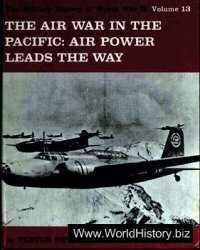A complete re-structuring of the Polish army was instigated by the last Piast king of Poland, Casimir the Great (1333-70), and the organisation thus arrived at persisted under his successors Louis I the Great, the
Angevin king of Hungary (1342-82), and the Lithuanian Grand Duke Jogailo, or Jagiello, who became King Vladislav II of Poland (1386-1434). Poland and Hungary were again briefly united under Vladislav III, King of Poland 1434-44 and of Hungary (as Laszlo IV) 1440-44, who was killed at the Battle of Varna.
The basis of military service was the pospolite ruszenie, by which the service of all freemen was obligatory by law. Its nucleus, as in the West, comprised the country’s knighthood, which, though bearing a superficial resemblance to that of Western Europe, differed in being organised on a clan basis rather than a feudal structure. All its members were nominally equal, superior social status being conferred only on those of royal blood, or those whose personality or martial prowess set them above their fellows. The smallest military unit was the lance (kopia), comprised of a knight or man-at-arms and 2-5 mounted men plus some foot-soldiers. The mounted retainers were called strzelcy, best translated as ‘shot-men’ — i. e. archers, crossbowmen and, later, handgunners. They were recruited from among the hamlet and village elders {wojt and soltys respectively), who were obliged in turn to bring along 2-3 other men of their own, these providing the infantry element of the lance. Other elders themselves fought as infantry, commanding units of 10 men, thereby earning their title of dziesietnik or ‘decurion’. The exact number of men in a lance depended on the knight’s wealth, since he was expected to supply his lance with food for 6 weeks when fighting within the boundaries of the kingdom. Outside of the kingdom, however, he was paid by the crown, receiving in addition compensation for loss of men, horses and equipment in the king’s service, and having his ransom paid by the crown if he was captured. Eventually this practice effectively crippled the Polish royal treasury following Vladislav Ill’s campaigns of 1440-42 in Hungary, the crown thereafter becoming dependent on the whims of the nobility. Jan Dlugosz wrote that ‘King Vladislav, during his campaign in Hungary, mortgaged nearly all the towns, castles, lands and villages, as well as the royal customs duties and other revenues.’
A varying number of lances went to make up a larger unit usually called a ‘banner’ or a ‘standard’, often referred to as a rota. Each of these was formed either from members of the same family or a related group of families, or from the men-at-arms of a specific province or district. Its strength therefore varied somewhat, between 50 and 120 lances, numbering from 150-600 or even 900 horsemen. There were 50 such banners at the Battle of Tannenberg in 1410. Each was commanded by a knight referred to in the Latin sources as a capitaneus (captain) or ductore (conductor, cf. Burgundian conducteur), but more popularly known as a rotmistr (rota-master) or hetman (a Czech word possibly derived from the German Hauptmann). Provincial banners were commanded by a starosta or marshal, often a duke or prince of royal blood. All commanders of banners were appointed by the king, though within the banner the rotmistr selected his own officers.
Infantry were similarly organised in rotas formed on a provincial basis, generally about 150-strong and usually commanded by a knight complete with his lance. The best-equipped infantry were of the town and guild militias, who provided the majority of the crossbowmen and pavisiers. However, infantry were not favoured on the battlefield and firepower was normally supplied instead by the strzelcy or by mercenary or auxiliary light cavalry, provided by Cumans, Wallachians (Wolochy), Hungarians and Lithuanians. After the union with Lithuania in the late-14th century (see below) Tartars also appeared; indeed, with the exception of the Cumans all of the above elements were present at Tannenberg, where Bessarabians and Serbs are also recorded. (Bessarabia was on the eastern frontier of Moldavia, and it is doubtless Moldavians that are intended since there were 400 Moldavian cavalry present at the siege of Marienburg only a few years later in 1422.) Such mercenary or auxiliary troops were maintained only in wartime, serving under their own officers under the overall command of a Polish knight holding the title of Marshal of Mercenaries. Some 2-3,000 mercenaries were hired for the Tannenberg campaign.
Overall command of the army was in the hands of the king, assisted by a sort of military council of some 8-12 knights. After these came the Grand Marshal (and, after the union, the Grand Marshal of Lithuania), then the starostas or marshals referred to above, the provincial voivodes, and the castellans.
In 1386 Poland was amalgamated with Lithuania by the marriage of Queen Jadwiga (1384-99) to Grand Duke Jogailo. This did not result in the overnight creation of a world super-power, as the sheer size of their combined territories might suggest, since the new king of Poland and his successors in Lithuania, Skirgailo (1387-96) and Vytautus (or Witold, 1392-1430), continued to pursue their own distinct and occasionally antagonistic policies for the next 50 years, until the death of Vytautus in 1430, just before he could be crowned king of Lithuania, and of Jogailo in 1434.




 World History
World History









